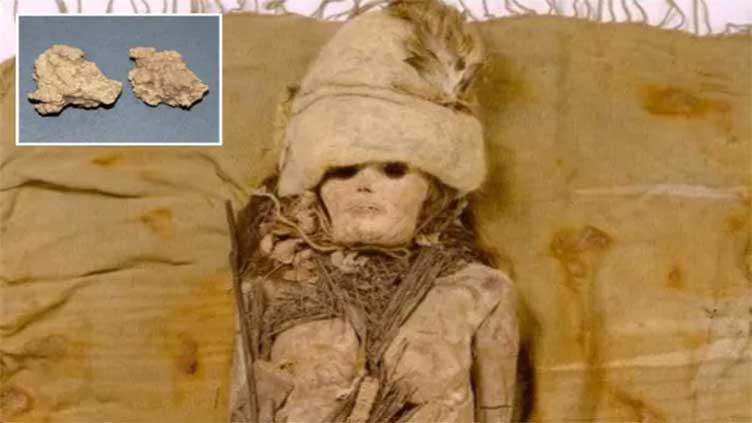World's oldest cheese found in ancient Chinese tomb smeared on dairy-loving mummies

WeirdNews
Images provide a look at what may be the first ever kefir cheese
(Web Desk) - The world’s oldest piece of cheese has been found in the tomb of a Chinese mummy.
Archaeologists reckon a peckish Bronze Age farmer was buried with a chunk of their favourite smelly stuff.
The morsel is estimated to be 3,600 years old, beating the previous record by 400 years.
DNA analysis found it was made with cow and goat milk and it is thought to be one of the first examples of the trendy probiotic, kefir.
Professor Qiaomei Fu, of the Chinese Academy of Sciences, said: “This is the oldest known cheese sample ever discovered in the world.
“This is a rare and valuable opportunity as food items like cheese are extremely difficult to preserve over thousands of years.
“Studying the ancient cheese in great detail can help us better understand our ancestors’ diet and culture.”
Specimens of the cheese were first found about 20 years ago in graves in the Tarim Basin desert region of northwestern China.
Writing in the journal Cell, she says it is a type of fermented milk called kefir.
Kefir is back in vogue in modern diets as it is packed with healthy bacteria that help digestion and lower blood sugar and cholesterol.
Scientists at the time found it scattered around the heads of ancient mummies but did not have the technology to study it.
Prof Fu has now used modern DNA analysis to work out what it was.
Bacteria in the age-old dairy were found to be closely related to the lactobacillus found in modern versions, but were probably harsher on people’s guts.
Prof Fu said: “This is an unprecedented study allowing us to see how a bacterium evolved over 3,000 years.
“We’ve gained a clearer picture of ancient human life and their interactions with the world.
“This is just the beginning and we hope to use this technology to explore other previously unknown artefacts.”
Many traces of prehistoric cheese have been found around the world but they are often chemical traces left on tools or crockery, instead of lumps of the stuff.
Proof of humans making it are estimated to date back more than 7,000 years.
Bacteria in the age-old dairy were found to be closely related to the lactobacillus found in modern versions, but were probably harsher on people’s guts.
Prof Fu said: “This is an unprecedented study allowing us to see how a bacterium evolved over 3,000 years.
“We’ve gained a clearer picture of ancient human life and their interactions with the world.
“This is just the beginning and we hope to use this technology to explore other previously unknown artefacts.”
Many traces of prehistoric cheese have been found around the world but they are often chemical traces left on tools or crockery, instead of lumps of the stuff.
Proof of humans making it are estimated to date back more than 7,000 years.


